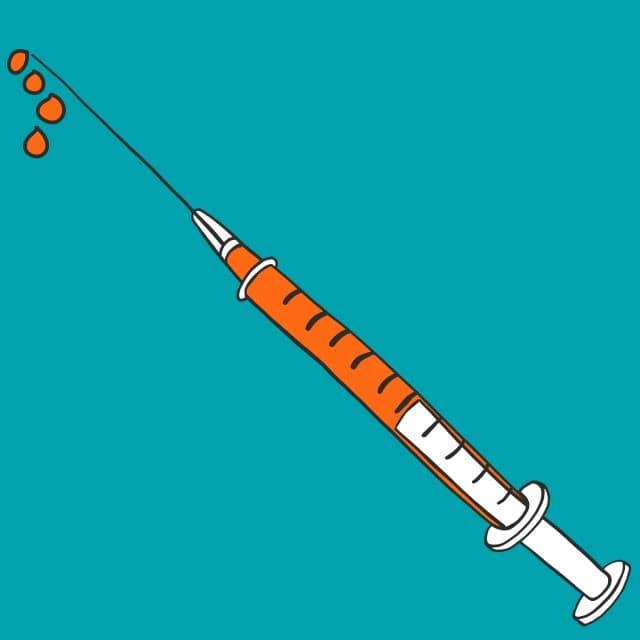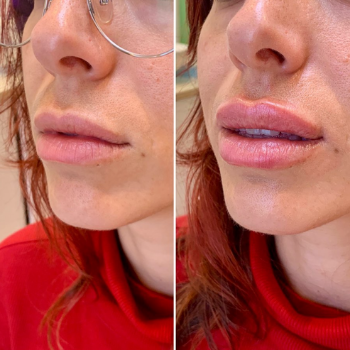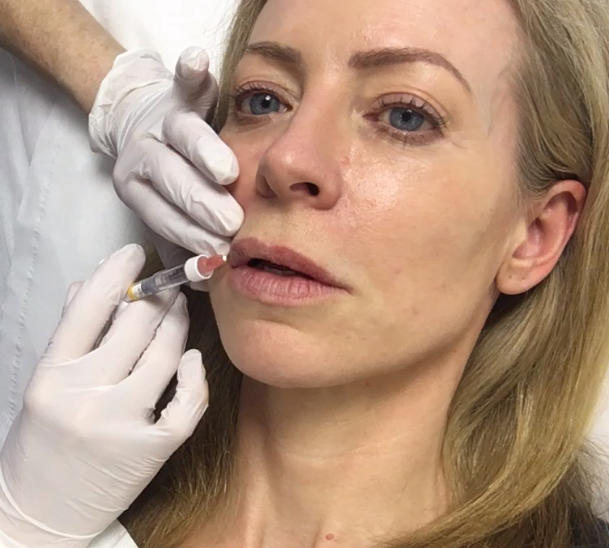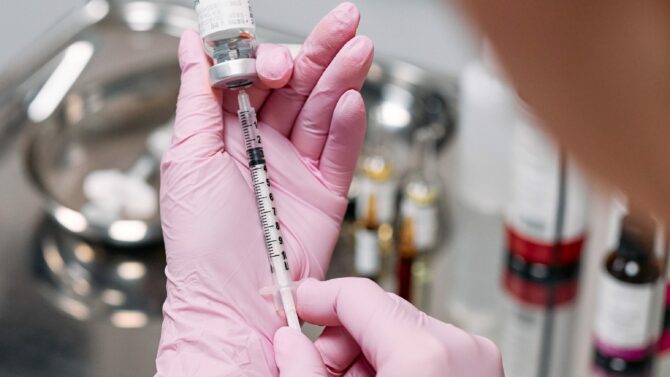Should I get lip fillers?
This is a very personal decision and one that you should consider carefully. Please don’t rush off to get lip fillers because one of your friends has tried it, or because someone famous you follow on Instagram always has an impressive pout. Consider getting lip fillers if your lips are losing volume and becoming thinner and drier as you age, or if your lips are asymmetric and you want to make their shape more even.
If you are under 30, you are very unlikely to NEED lip fillers, even if young celebrities – and maybe your friends – are getting them done as if they were just the latest fashion rather than a minor medical procedure.
To find out your options for lip fillers, consult an experienced practitioner. Most responsible practitioners are reluctant to treat anyone under 25. And if that practitioner tells you you don’t need lip filler, you should listen to their reasons why – and not just give them a bad review for not doing what you want.
Remember, you can always download my full lip fillers factsheet for more information to keep on your device.
Where can I get lip fillers?
You can get lip fillers from a wide range of practitioners, but it’s vital that you choose a safe practitioner with plenty of experience.
In the UK, there is no law to stop anyone – anyone – buy hyaluronic acid fillers and needles on the internet and beginning to experiment by injecting them into people’s lips. There is no legal requirement to take a training course of any sort. As you can imagine, things can go horribly wrong.
You can use the Find a Practitioner tool on this website to find a practitioner near you who is great at doing lip fillers.
Otherwise, make sure to choose someone who is medically qualified (a doctor, nurse, dentist or surgeon), who has trained properly in aesthetic procedures and has lots of experience at injecting lips. Your practitioner also needs to be able to manage complications, and know what to do if, by accident, they inject filler into an artery (which can block the artery, and cause the surrounding tissue to die, see ‘necrosis’, below).
How much do lip fillers cost?
Lip fillers typically cost from £300 upward, but the cost can vary considerably depending on what kind of lip treatment you’re having. Fillers usually come in 1ml syringes, and practitioners charge according to how much filler they are using on you, as well as for the time that the procedure takes. Cheaper treatment usually means that the practitioner is using inferior products, and/or has little expertise at doing the treatment. Please don’t choose a treatment based on price; look for someone who gives consistently good results. The practitioners listed on this site all spend a distressing amount of time trying to correct the botched results of inexperienced and rogue practitioners, and this is hard to do, particularly in the lips. As they all tell me, ‘cheap’ treatment often doesn’t end up being so cheap, either emotionally or financially.
How long do lip fillers take?
Lip fillers typically take from 15 to 60 minutes, depending on how much work the practitioner is doing on you.
To minimise discomfort, you may need to have a numbing cream applied to your lips before the treatment; this takes effect in 15–20 minutes. Alternatively, you may need to have a dental block, which is quicker but still takes several minutes to kick in. For either a numbing cream or an injection, you should allow yourself time immediately after the procedure for the anaesthetic to wear off.
How long do lip fillers last?
Hyaluronic acid lip fillers typically last for between six months or a bit longer before they are broken down by the body. Exactly how long fillers last depends on how much was injected in the first place and also on your metabolism – some people’s bodies appear to break fillers down much faster than others.
What pre-care information should I be aware of?
Before your lip filler appointment, your practitioner should walk you through some key pre-care information to help limit bruising and other side effects. In particular, avoid taking blood thinning medications such as aspirin, and supplements like vitamin E, as well as limiting alcohol in the week leading up to your appointment. If you struggle with cold sores, it is highly recommended that you take antiviral medication in the run-up to having lip filler too. That’s because the trauma of the injections can otherwise trigger a breakout.
What can I do after getting lip fillers? Lip filler aftercare explained…
As you know, the lips contain delicate tissues, and these tissues swell in protest at having needles stuck in them. That swelling will go down in due course, but it may take a few days.
If you have a dental block before your lip fillers, the block will also cause swelling. This swelling will disappear in an hour or so, but it does mean that you will inevitably leave the clinic with lips larger than you had expected, wondering if you have made a terrible mistake.
First, don’t panic, because the swelling will subside in due course. Second, use an ice pack on your lips every hour to help bring down the swelling.
Other ways you can help reduce the swelling include the following:
- Stay hydrated by drinking plenty of water
- Avoid alcohol, which may cause blood vessels to dilate and so increase bruising
- Avoid strenuous exercise and extreme heat
Are there any side effects to lip fillers?
Lip fillers can have several side effects, and you will typically need 1–3 days of recovery time after having them injected.
First, swelling is a given – but what you can’t tell until you try lip injections is whether you are a person in whom the swelling will last for hours or one in whom it will last for days.
You may also get bruising after having lip fillers injected.
Lumpiness and asymmetry can also occur. Both lumpiness and asymmetry are less likely to be a problem if your practitioner has lots of experience.
If you are unlucky, you might get an infection at the injection site.
It is always possible that your practitioner, particularly if they are inexperienced, may inject filler into a blood vessel around the mouth. If this happens, and the filler blocks the artery, the tissue around the blockage will soon start to die as the blood supply is cut off. This may first show up as blanching of the area, then it will go dark, and swell and look like a bruise, but it’s not a bruise, it is a serious complication and needs immediate treatment by an experienced practitioner before necrosis, or tissue death, sets in. The practitioner will need to inject the blockage with hyaluronidase, an enzyme that dissolves hyaluronic acid, and this should restore the blood supply. If you suspect this may have happened to you, send photos to your practitioner immediately, and get to see them as soon as you can.
Do lip fillers go lumpy?
Lip fillers can sometimes go lumpy. If this happens, you will need to have the lumps dissolved with Hyalase, an enzyme (hyaluronidase) that dissolves the injected hyaluronic acid.
Remember to download the full lip fillers factsheet for more handy insights like this.
Is bruising normal after lip fillers?
Bruising is always possible after you get lip fillers, because your lips are highly sensitive to trauma, and the needle may nick one of the tiny blood vessels in the area.
Whether you get bruising is fairly random. It’s not true that only bad injectors give you bruises – but some people just do bruise more than others, in the same way that some people’s lips just swell more than others after treatment.
What other lip plumping techniques are there?
No longer are injections the only option for plumper, fuller lips. Non-needle-based techniques include Hydrafacial’s Perk Lip Treatment that uses a patented roller to remove dead skin cells from the lips, while delivering nutrients that plump and smooth. New laser treatments are also available including Prodeep and ADVATx. These lasers work by triggering an increase in collagen production, resulting in boosted moisture, subtle volume enhancements, and reduced lines.
What is it like to have lip fillers?
What it’s like depends on the type of lip fillers you’re having and how the practitioner is injecting them. For example, a full lip enhancement treatment is much more extensive than a minimal treatment to improve lip symmetry.
Generally, though, having lip fillers goes something like this:
- After finding a suitable practitioner, you consult the practitioner and determine exactly what work the practitioner will perform on your lips.
- Before the procedure, you will usually have numbing cream applied to your lips or a dental block injected (just like at the dentist’s). There’ll be a bit of a wait for the anaesthetic to take effect. If you have numbing cream, your practitioner may also use another pain-management tool during the procedure, such as a Nuevibe, a small, pen-shaped device with a metallic T-bar on the end that vibrates against your lips and distracts you from feeling the needle.
- The practitioner will inject the fillers, using either a fine needle to do normal-style injections or using a cannula, a thicker needle that’s inserted and then moved around under your skin. Having a cannula stealthily burrowing just below the surface of your lips feels peculiar, but it’s not painful.
- After the procedure, your lips are likely to swell either immediately or overnight. This swelling will take from 1–3 days to go down.












 The Tweakments Chatbot
The Tweakments Chatbot